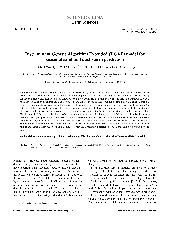摘要
Here we use a Discriminant Genetic Algorithm Extended (DGAE) model to diagnose and predict seasonal sand and dust storm (SDS) activities occurring in Northeast Asia. The study employed the regular meteorological data, including surface data, upper air data, and NCEP reanalysis data, collected from 1980-2006. The regional, seasonal, and annual differences of 3-D atmospheric circulation structures and SDS activities in the context of spatial and temporal distributions were given. Genetic algorithms were introduced with the further extension of promoting SDS seasonal predication from multi-level resolution. Genetic probability was used as a substitute for posterior probability of multi-level discriminants, to show the dual characteristics of crossover inheritance and mutation and to build a non-linear adaptability function in line with extended genetic algorithms. This has unveiled the spatial distribution of the maximum adaptability, allowing the forecast field to be defined by the population with the largest probability, and made discriminant genetic extension possible. In addition, the effort has led to the establishment of a regional model for predicting seasonal SDS activities in East Asia. The model was tested to predict the spring SDS activities occurring in North China from 2007 to 2009. The experimental forecast resulted in highly discriminant intensity ratings and regional distributions of SDS activities, which are a meaningful reference for seasonal SDS predictions in the future.
- 出版日期2011-1
- 单位中国气象科学研究院
